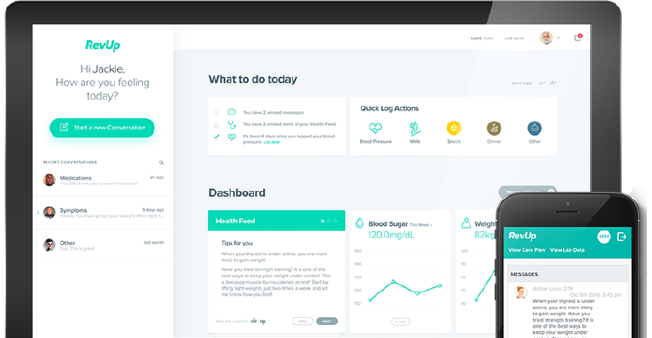User-Friendly Software for Remote Patient Monitoring: Easy Assimilation and Use
User-Friendly Software for Remote Patient Monitoring: Easy Assimilation and Use
Blog Article
The Future of Medical Care: Remote Patient Keeping Track Of Simplified
As healthcare remains to progress, one area that holds enormous guarantee is remote person monitoring. The principle of streamlining this procedure through technological developments is improving the means care is supplied and received. With a concentrate on enhancing client outcomes and enhancing healthcare distribution, remote surveillance is poised to revolutionize the sector. By checking out the benefits, technical developments, and future fads in this field, we can get valuable understandings into the transformative potential of remote person monitoring.
Advantages of Remote Person Surveillance
Remote individual tracking offers a multitude of benefits for both health care service providers and individuals alike. Furthermore, remote patient surveillance boosts the total quality of care by giving an extra all natural and detailed sight of clients' wellness condition beyond conventional in-person brows through.
Moreover, remote patient tracking can lead to enhanced individual outcomes and complete satisfaction. Remote surveillance can decrease the demand for constant hospital check outs, decreasing medical care prices for both providers and people.
Technology Driving Remote Monitoring
In the realm of contemporary healthcare, technological developments play a critical duty in driving the advancement and effectiveness of remote person monitoring. The combination of cutting-edge technologies such as wearable tools, mobile applications, and cloud-based platforms has transformed the means doctor from another location check and take care of patient health and wellness - remote patient monitoring platform. These modern technologies allow continual real-time monitoring of important indications, medication adherence, and various other critical health information, enabling timely treatments and customized treatment strategies
One trick technology driving remote tracking is the Web of Things (IoT), which makes it possible for seamless connection between clinical tools and healthcare systems. IoT tools such as smartwatches and wireless sensing units gather and transfer patient information to centralized systems, helping with remote tracking from anywhere in the globe. Expert system (AI) and artificial intelligence formulas even more improve remote surveillance by evaluating vast amounts of patient data to find patterns, anticipate health and wellness trends, and sharp medical care carriers to prospective problems.
Effect On Health Care Delivery
With the assimilation of innovative innovations driving remote client monitoring, the influence on healthcare shipment is coming to be significantly profound and transformative. Remote client monitoring allows healthcare companies to use even more tailored and proactive like clients, bring about boosted health end results and decreased healthcare facility admissions. By remotely tracking important indicators, signs, and medication adherence, healthcare specialists can interfere early, stopping issues and boosting the overall top quality of treatment.
Furthermore, remote tracking enhances accessibility to health care solutions, specifically for people in rural or underserved locations. Patients can get continuous surveillance and assistance from their homes, removing the need for frequent in-person gos to. This not only conserves time and lowers expenses for both individuals and medical care facilities yet also lessens the threat of direct exposure to contagious illness, a vital factor to consider in the existing medical care landscape.
Additionally, remote patient surveillance enables doctor to much better focus on and designate resources treatment based upon real-time information. By recognizing high-risk individuals and stepping in immediately, healthcare shipment ends up being more reliable and efficient, inevitably bring about a more sustainable and patient-centered healthcare system.
Improving Client Outcomes

Additionally, RPM enables positive management of chronic problems, minimizing the chance of intense worsenings Discover More Here and healthcare facility readmissions. Individuals take advantage of enhanced convenience and comfort, as they can receive treatment in their own homes while remaining linked to their doctor. This continual monitoring not only improves client complete satisfaction but likewise cultivates a feeling of empowerment and interaction in their own health administration.
Future Trends in Remote Tracking
Embracing cutting-edge modern technologies in remote individual surveillance is forming the future landscape of health care distribution. The future fads in remote monitoring are expected to revolutionize the method health care is provided, making it extra patient-centric and efficient. One significant pattern is the raised use of wearable gadgets and sensing units to collect real-time information, making it possible for doctor to check patients continually without the need for constant in-person brows through. These devices can track important indicators, drug adherence, and activity levels, supplying a detailed view of the person's health condition.

Furthermore, telehealth platforms are ending up being more advanced, permitting online assessments, remote medical diagnosis, and remote patient keeping track of all in one integrated system (rpm software). This holistic method to remote surveillance is streamlining healthcare delivery, improving individual complete satisfaction, and inevitably, improving total high quality of care
Final Thought
To conclude, remote person surveillance offers various benefits in medical care shipment, driven by developments in innovation. here are the findings It has the prospective to enhance client end results and revolutionize the method healthcare is delivered. Future patterns in remote monitoring will certainly proceed page to form the landscape of health care, giving opportunities for even more effective and tailored client treatment.
Remote patient surveillance offers a plethora of benefits for both health care suppliers and individuals alike. Furthermore, remote patient surveillance enhances the general top quality of treatment by offering a more all natural and extensive view of individuals' health and wellness condition beyond standard in-person check outs.
Furthermore, remote client monitoring can lead to improved person end results and satisfaction. Remote patient surveillance allows healthcare providers to provide more proactive and tailored treatment to clients, leading to improved wellness end results and decreased hospital admissions. Remote person surveillance (RPM) plays a substantial role in boosting individual outcomes by giving constant, real-time information that makes it possible for health care providers to interfere immediately and readjust treatment strategies as required.
Report this page